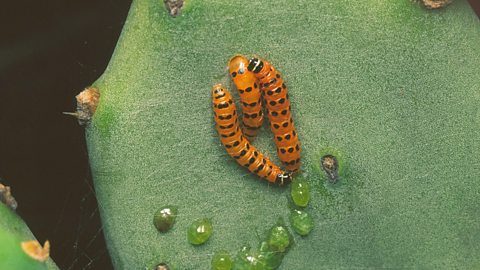Biological control
Biological control is an alternative to using pesticides and involves using one species or biological agent to control the population size of another species. The organism used is called a biological control agent.
By releasing a natural predator into the crop growing area, the number of pests can be reduced. This can have unforeseen consequences as the numbers of different organisms in the food web are changed. There have been examples of the predator becoming a more serious pest than the original problem.
An example of biological control is the reduction in number of the Australian prickly pear cactus (Opuntia). This cactus was introduced to Australia in 1840 and quickly spread over large areas of land, making it unsuitable for farming.
To reduce the population size of cacti the moth Cactoblastis cactorum was introduced from Argentina in 1925. The caterpillars of the moth consumed the cacti, and over a period of a few years greatly reduced their numbers.

Genetically modified (GM) crops
genetically modifiedDescribes a cell or organism that has had its genetic code altered by adding a gene from another organism. crop plants have received genes from other organisms in order to improve their characteristics. Genetic modification of crop plants may help to reduce the impact of intensive farming methods on the environment.
Scientists have added genes from bacteria into the crop plants maize and potatoes that make them toxic to insects. This reduces the need to use large quantities of insecticides.
In the future it may be possible to introduce genes to crop plants that allow them to use nitrogen fertilisers more efficiently, reducing the need to use large quantities of fertilisers.